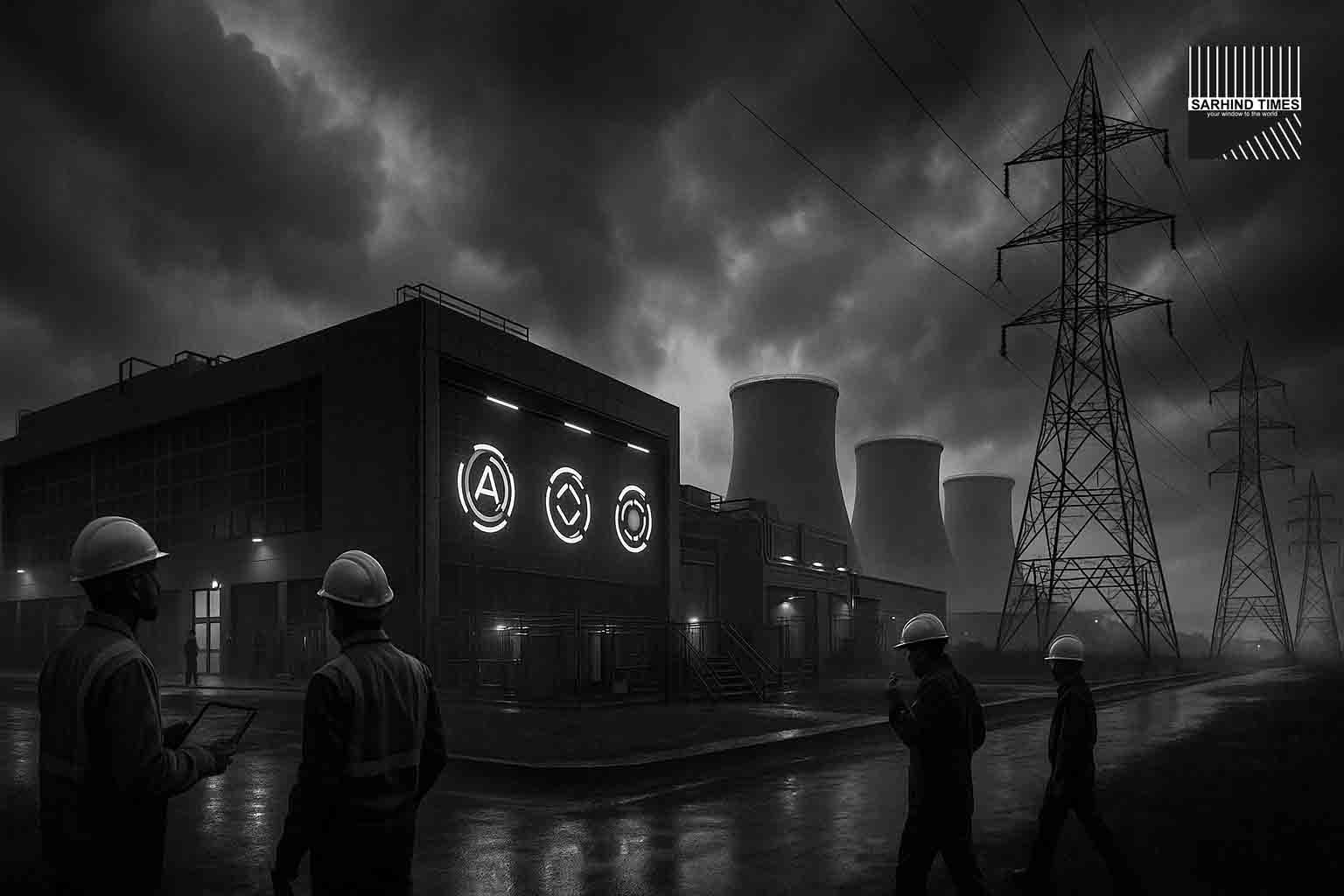India’s digital economy is expanding at breakneck pace. The surge in artificial intelligence (AI) workloads, combined with the mushrooming of hyperscale data centres, is placing unprecedented strain on local power grids. While renewables remain the backbone of India’s net-zero journey, their intermittency problem is now colliding with the 24×7 reliability demands of AI infrastructure.
Enter small modular reactors (SMRs) — compact nuclear power units promising steady, low-carbon electricity. New Delhi is actively considering SMRs as part of its AI infrastructure push, positioning nuclear as the silent workhorse behind GPUs, sovereign datasets, and next-generation AI model development.
The Data Centre Explosion in India
- Current footprint: India hosts ~800 MW of operational data-centre capacity, with commitments that could triple this by 2030.
- AI workloads: Training large language models can consume megawatts per cluster, spiking demand.
- State incentives: Maharashtra, Tamil Nadu, and Uttar Pradesh are courting hyperscale players with land, tax breaks, and power assurances.
- Grid stress: Cities like Mumbai, Chennai, and Noida already face difficulty balancing demand during peak hours.
Why SMRs Enter the Conversation
Unlike solar or wind, SMRs provide round-the-clock baseload power with:
- Compact footprint: Easier siting near industrial hubs.
- Enhanced safety features: Passive cooling, modular redundancy.
- Scalability: Units can be added incrementally, aligning with phased AI park growth.
- Heat integration: Waste heat can be repurposed for district cooling or industrial uses.
This makes SMRs an attractive candidate for energy-hungry, mission-critical facilities like AI data centres.
Policy Context: India’s Nuclear and Digital Crossroads
- Energy security: Reducing coal reliance while meeting surging demand.
- Net-zero pledge (2070): Requires cutting emissions from new digital infrastructure.
- Digital economy target: $1 trillion digital economy by 2030; AI expected to contribute ~$500B.
- AI infrastructure roadmap: Sovereign datasets, GPU clusters, indigenous model training — all energy-intensive.
Pairing SMRs with AI facilities aligns these twin national priorities.
Potential Pilot Projects
Officials suggest pilot SMR-data centre clusters near:
- Industrial hubs (Gujarat, Tamil Nadu, Maharashtra) with high data demand.
- Ports & SEZs with export-linked digital services.
- Knowledge corridors (Hyderabad-Bengaluru-Chennai triangle).
Such pilots could test economics, safety, and public acceptance before scaling nationwide.
Hurdles on the Path
- Regulatory: India’s Atomic Energy Act currently centralizes nuclear projects under government entities; private participation in SMRs would need clarity.
- Financing: Nuclear projects are capital-intensive; innovative PPP models and green finance instruments may be necessary.
- Public acceptance: Safety perceptions around nuclear, especially post-Fukushima, remain sensitive.
- Technology sourcing: India may need international collaboration (US, France, Russia) for early SMR designs.
Industry Voices
- Tech sector leader: “AI parks need power like steel mills once did — 24×7, carbon-light. SMRs could be the backbone if policy allows.”
- Energy analyst: “District cooling with SMR heat reuse could change the economics of both nuclear and data centres.”
- Policy advisor: “The challenge is less technical, more about aligning regulation, finance, and public trust.”
International Parallels
- US: Companies exploring SMRs for energy-intensive crypto and AI parks.
- UK & Canada: Pilots underway to pair SMRs with industrial clusters.
- China: Aggressive SMR development with digital economy synergies.
India can leapfrog directly to such integrated models rather than retrofitting existing plants.
Climate & ESG Dimension
- Carbon savings: Replacing coal-fired backup with SMRs could avoid millions of tonnes of CO₂ annually.
- Investor appeal: Global funds increasingly demand low-carbon digital infrastructure.
- SDG alignment: SMR-linked AI hubs could embody the “green digital growth” narrative India seeks to project.
The Road Ahead
- Regulatory sandbox for SMR pilots tied to digital infrastructure.
- Financing models blending sovereign guarantees with green bonds.
- Public outreach campaigns to build confidence in nuclear’s safety record.
- International partnerships under Quad and IAEA frameworks.
If executed smartly, India could position itself as a global pioneer in AI-nuclear integration.
Conclusion: Powering the Next Digital Leap
India’s bet on AI demands reliable, clean power at an unprecedented scale. SMRs — once a niche nuclear concept — are emerging as a strategic enabler. Whether pilot projects succeed will depend on policy agility, financing creativity, and public trust.
If New Delhi can bridge these gaps, SMR-powered data centres may become the backbone of India’s AI-driven digital economy — marrying energy security with net-zero ambition.
#AI #DataCenters #Energy #SMR #Nuclear #NetZero #DigitalEconomy #IndiaAI #ClimateAction #Innovation






















+ There are no comments
Add yours